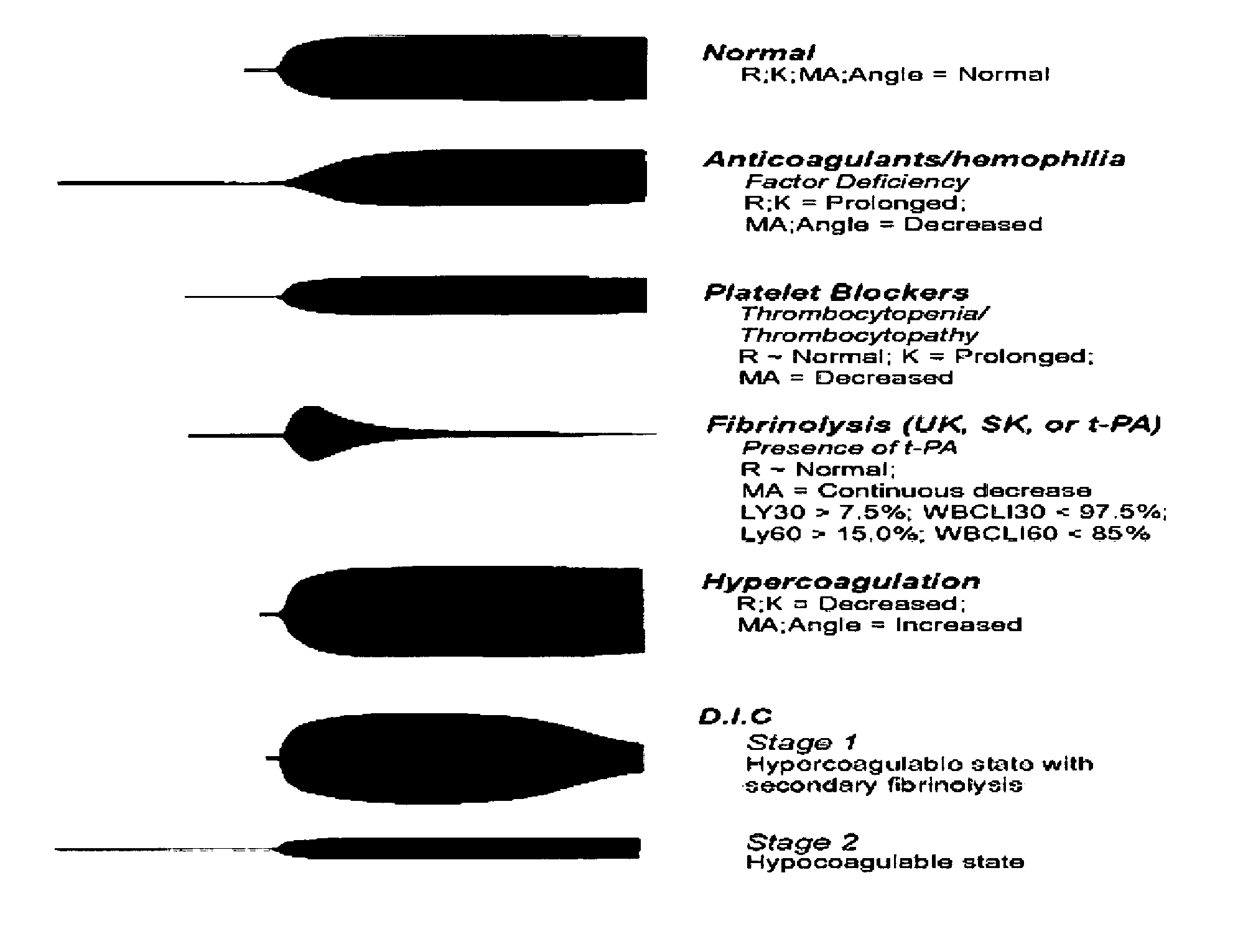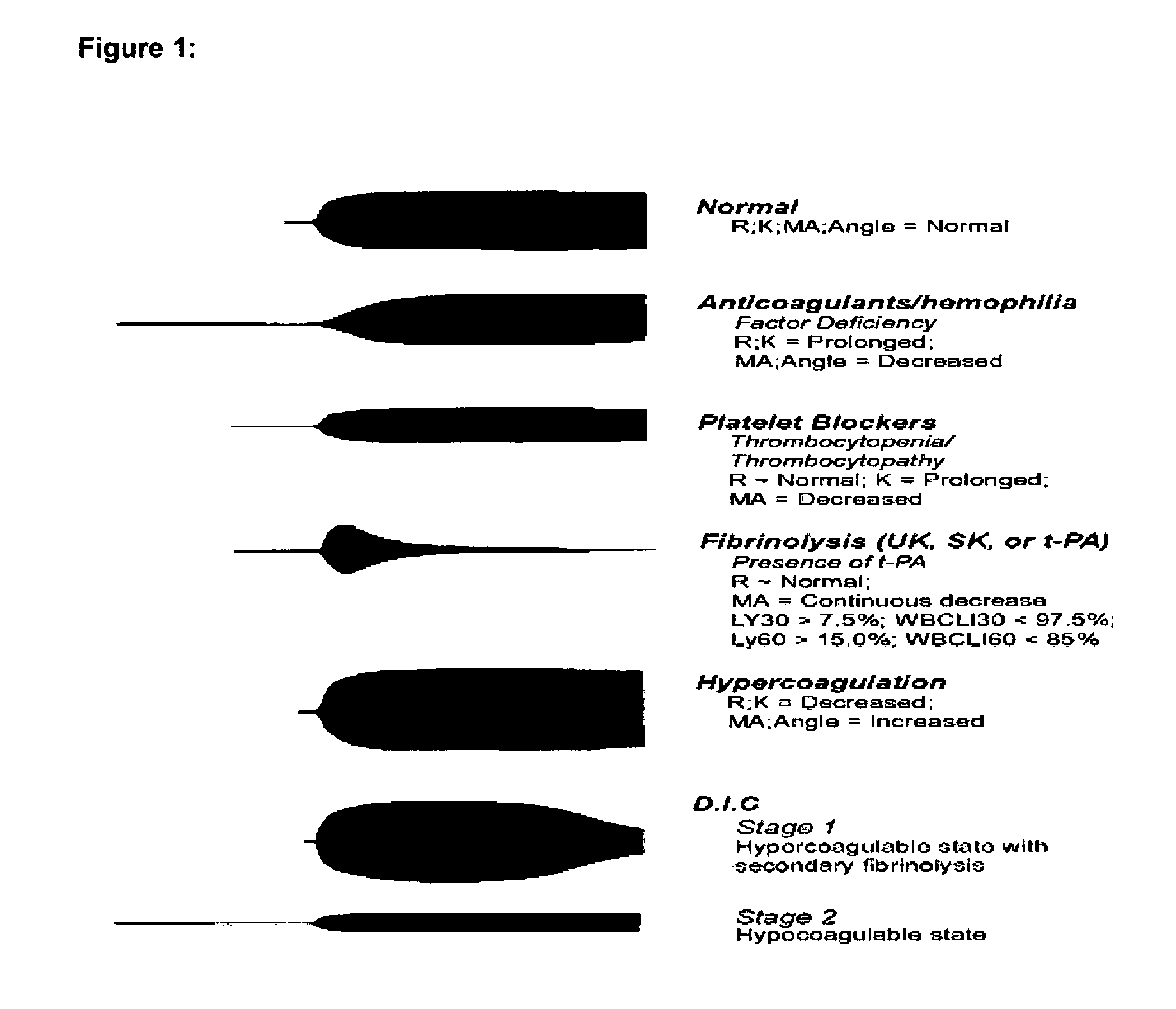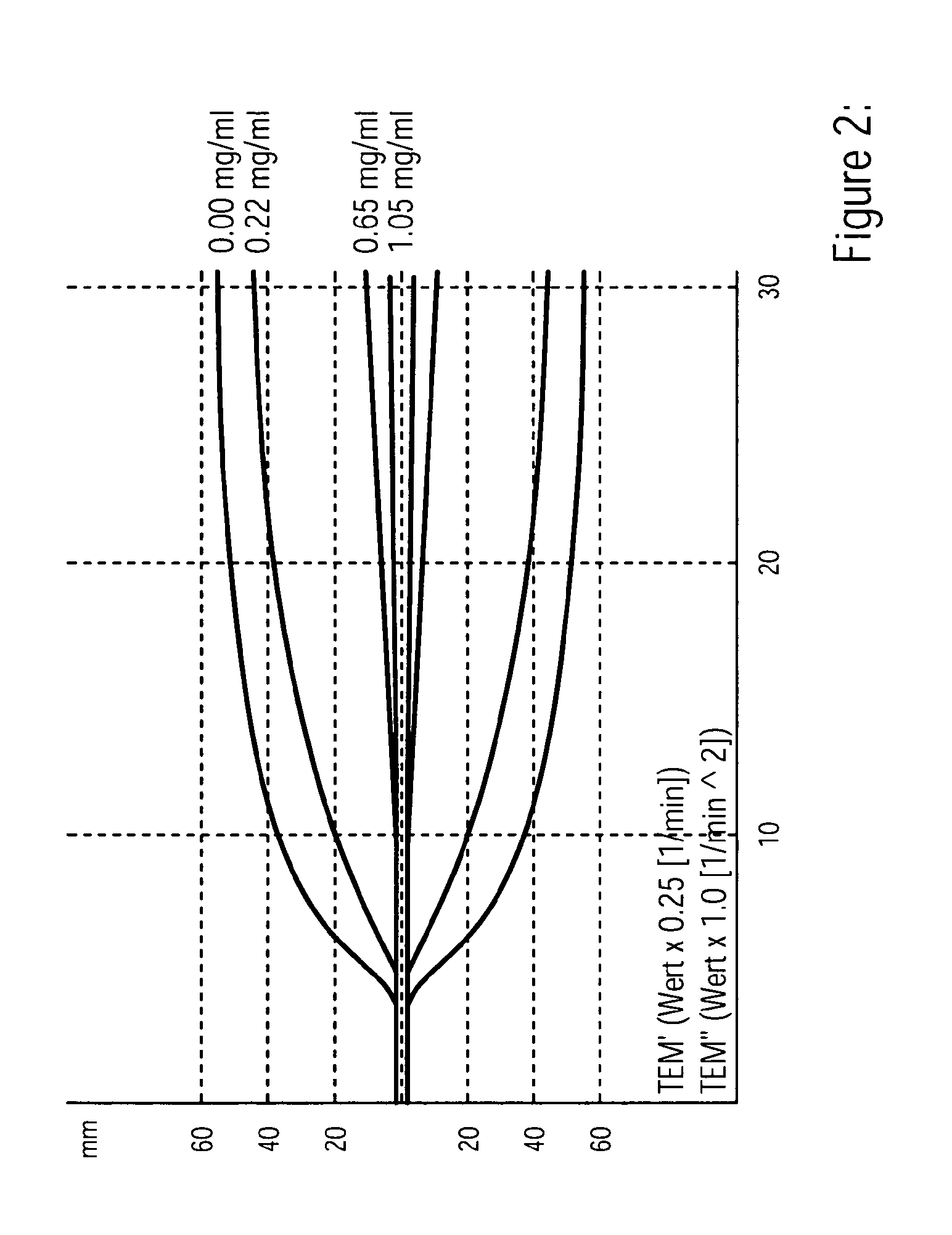Diagnostic in vitro method for assessing von willebrand disease and increased bleeding risk associated with von willebrand disease and acquired or congenital disorders of platelet function
a technology of platelet function and in vitro diagnostics, applied in biochemistry apparatus and processes, instruments, material analysis, etc., can solve problems such as loss of function, structural abnormality of multimers, and presence of small multimer units in circulation, and achieve the effect of superior prediction of bleeding risk
- Summary
- Abstract
- Description
- Claims
- Application Information
AI Technical Summary
Benefits of technology
Problems solved by technology
Method used
Image
Examples
example 1
[0127]Citrate-stabilized blood from a healthy patient was transferred to a vial containing a standardized kaolin reagent and mixed by inversion The kaolin reagent was purchased from Haemoscope Corporation. The mixture was mixed well and divided into two 500 μL aliquots. Different amounts of ristocetin at a concentration of 15 mg mL−1 was added to one part of the activated blood aliquots and both samples were incubated on a mixer for 10 min. 300 μL of both aliquots were filled to TEG assay cups and 20 μL of 0.2 M CaCl2 were added. The TEG tracings were allowed to run as least until the maximal amplitude was reached using a Rotem Analyser. FIG. 2 shows four distinct TEG patterns obtained. Dependent of the final ristocetin concentration a decrease of the maximal amplitude and an increase in the clotting time were observed.
example 2
[0128]Analyser and the reagents were from Haemoscope Corporation. 1.3 mL of blood was collected in 3.18% trisodium citrate (1:9 anticoagulant to blood). One millilitre of citrate-stabilized blood was transferred to a vial containing a standardized kaolin reagent and mixed by inversion. The mixture was mixed well and divided into two 500 μL aliquots. 25 μL ristocetin at a concentration of 15 mg mL−1 was added to one part of the activated blood aliquots and both samples were incubated on a mixer for 10 min. 360 μL of both aliquots were filled to TEG assay cups and 20 μL of 0.2 M CaCl2 were added. The TEG tracings were allowed to run as least until the maximal amplitude was reached. FIG. 3 shows three distinct TEG patterns obtained. FIG. 1a shows the TEG profiles of a normal healthy person and FIGS. 1b and 1c shows the TEG profiles of patients with VWD type 3 and type 1.
example 3
[0129]According to the procedure in example 2 blood samples from healthy patients and patients with from VWD were tested. All VWD samples derived from patients diagnosed as having VWD using standard criteria. In addition to VWD plasma, a number of normal samples were also collected and used for comparative studies. The platelet activation in response to ristocetin is determined from the maximum amplitudes in the control (MA) and ristocetin activated trace (MARistocetin): MARicocetin / MA*100. The percentage change was calculated to assess individual subject's responses, thus providing an indication of relative response to a certain dose of ristocetin (0.71 mg / ml and 1,05 mg / ml final concentration). The Kaolin induced sample without adding ristocetin acted as the control measurement. Patients without VWD show a significant decrease of the the maximum amplitude after incubation with ristocetin as described in example 2. Almost all platelets are deactivated and no more platelet contribut...
PUM
 Login to View More
Login to View More Abstract
Description
Claims
Application Information
 Login to View More
Login to View More - R&D
- Intellectual Property
- Life Sciences
- Materials
- Tech Scout
- Unparalleled Data Quality
- Higher Quality Content
- 60% Fewer Hallucinations
Browse by: Latest US Patents, China's latest patents, Technical Efficacy Thesaurus, Application Domain, Technology Topic, Popular Technical Reports.
© 2025 PatSnap. All rights reserved.Legal|Privacy policy|Modern Slavery Act Transparency Statement|Sitemap|About US| Contact US: help@patsnap.com



